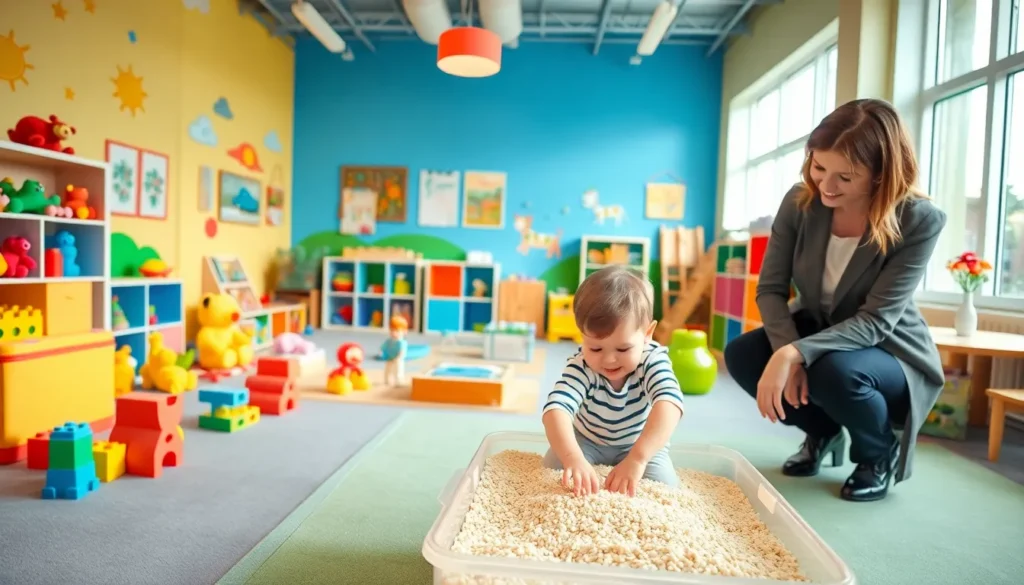Navigating the world of parenting after separation can feel like attempting to solve a Rubik’s cube while blindfolded. Two main approaches often come up: co-parenting and parallel parenting. Which one is right for your family? Let’s jump into the details and discover how to make parenting post-divorce less like a chess match and more like a well-rehearsed duet. Spoiler alert: there’s no one-size-fits-all solution.
Table of Contents
ToggleUnderstanding Co-Parenting

Co-parenting is a collaborative approach where both parents actively share responsibilities and engage with each other about their children’s upbringing. This method relies heavily on communication, teamwork, and mutual respect, creating a stable environment for kids to thrive.
Characteristics of Co-Parenting
In a co-parenting setup, parents work together to make decisions that affect their children’s lives. Key characteristics include:
- Open Communication: Regularly discussing schedules, educational needs, and emotional support.
- Shared Decision-Making: Both parents have a say in important matters like healthcare, schooling, and extracurricular activities.
- Consistency in Rules: Maintaining similar standards and expectations in both households to provide stability.
Advantages of Co-Parenting
The benefits of co-parenting are numerous:
- Emotional Support: Children feel secure knowing both parents are involved.
- Parental Cooperation: Shared responsibilities mean less strain on one parent.
- Positive Role Modeling: Kids learn how to resolve conflicts and communicate effectively through their parents’ interactions.
Challenges in Co-Parenting
But, co-parenting isn’t without its difficulties:
- Communication Breakdowns: Emotions may cloud judgment, leading to disputes.
- Divergent Parenting Styles: Different approaches to discipline or daily routines can cause friction.
- Scheduling Conflicts: Coordinating activities and important dates can be overwhelming.
Understanding Parallel Parenting
In contrast to co-parenting, parallel parenting serves as a more distanced approach. This method allows parents to maintain separate lives while still caring for their children. Rather than collaborating on every decision, each parent independently manages their household and parenting responsibilities.
Characteristics of Parallel Parenting
Key traits of parallel parenting include:
- Limited Communication: Parents interact only when necessary, focusing primarily on their child’s needs.
- Independent Decision-Making: Each parent makes choices within their own household rules without needing the other’s approval.
- Individual Routines: Children follow unique schedules and expectations at each parent’s home.
Benefits of Parallel Parenting
This method offers its own set of advantages:
- Reduced Conflict: Less communication can mean fewer arguments and stress.
- Focus on Individual Parenting: Parents can raise their children in a way that suits their unique parenting styles.
- Time for Personal Growth: Both parents have the freedom to pursue their interests and wellbeing without the pressure of constant collaboration.
Challenges in Parallel Parenting
Yet, parallel parenting isn’t perfect:
- Inconsistent Rules: Varying household rules can confuse children.
- Potential for Alienation: Kids may feel torn between parents if they’re not adequately supported.
- Lack of Shared Support: Parents miss out on the emotional support that comes from working together.
Comparing Co-Parenting and Parallel Parenting
Choosing between co-parenting and parallel parenting depends on various factors about the family dynamic and the parents’ relationship.
When to Choose Co-Parenting or Parallel Parenting
Parents who can communicate effectively, respect one another, and aim for a collaborative relationship may benefit more from co-parenting. Conversely, if past conflicts complicate interactions or if the parents have drastically different approaches to parenting, parallel parenting might be the safer route. Understanding the needs of the children and the dynamics at play is crucial for making the right choice.




